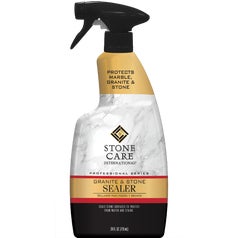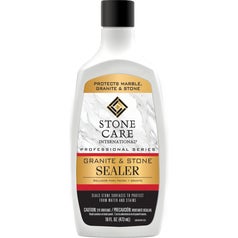The frequency of sealing will vary depending on your stone. A good rule of thumb is annually, but that is why it is important to test your seal often.
Types of Sealers
There are two types of sealers, coatings and penetrating. Coating sealers form a protective layer on top of the granite surface. Penetrating sealers go into the pores of the stone forming flexible molecular links. Penetrating sealers such as Stone Care International’s Granite & Stone Sealer, tend to last longer and provide more thorough protection.
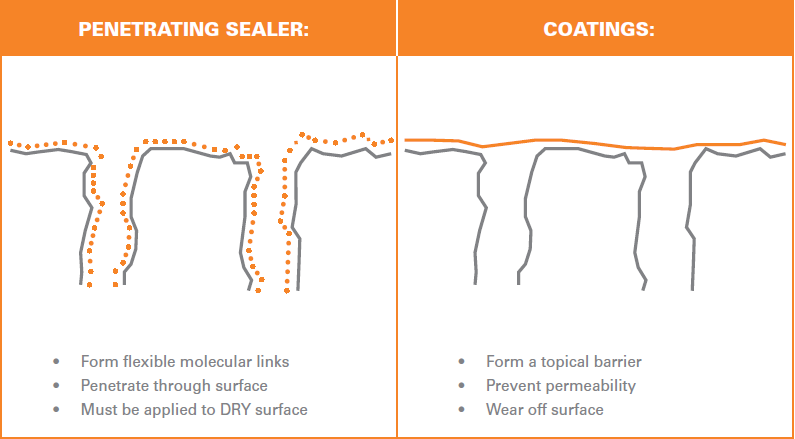
How to Test Your Current Seal
Being able to determine when a new seal is needed is a necessary skill of a granite owner. The test, called the Water Seal Test, is quite simple, but will be important for knowing when to replenish your seal.
- Pour water, about 3 inches in diameter, on several different places of the surface. Let the water sit for about 15 minutes
- If you see a dark mark or ring, the water is penetrating the stone (don’t worry, it will evaporate) and it’s time to reseal
- Ensure you’ve tested key areas of your countertop such as areas near sinks or appliances where liquid is most likely to accumulate on the countertop.
Water on unsealed stone
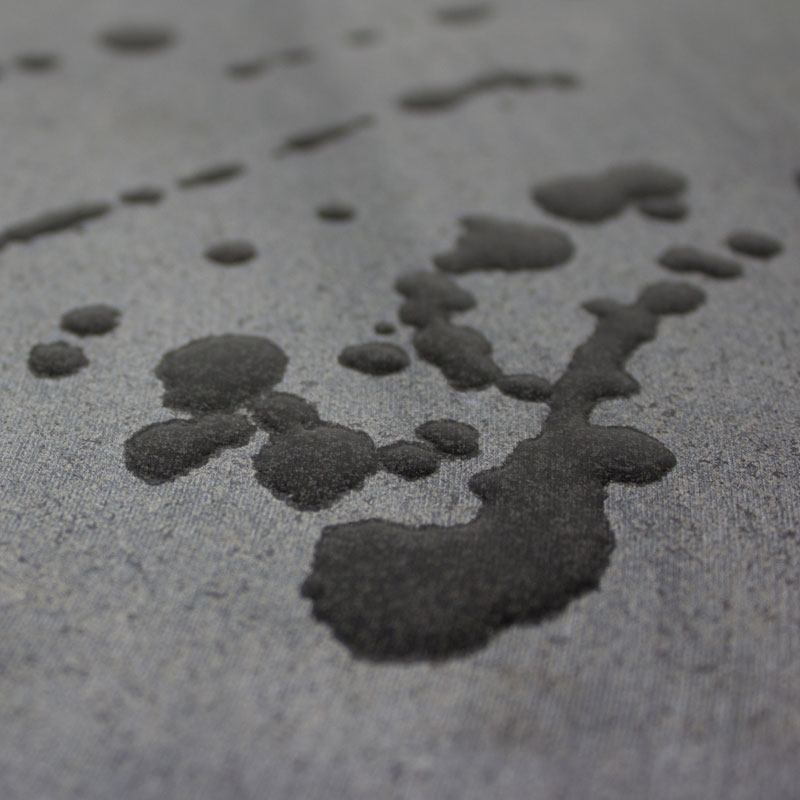
Water on sealed stone
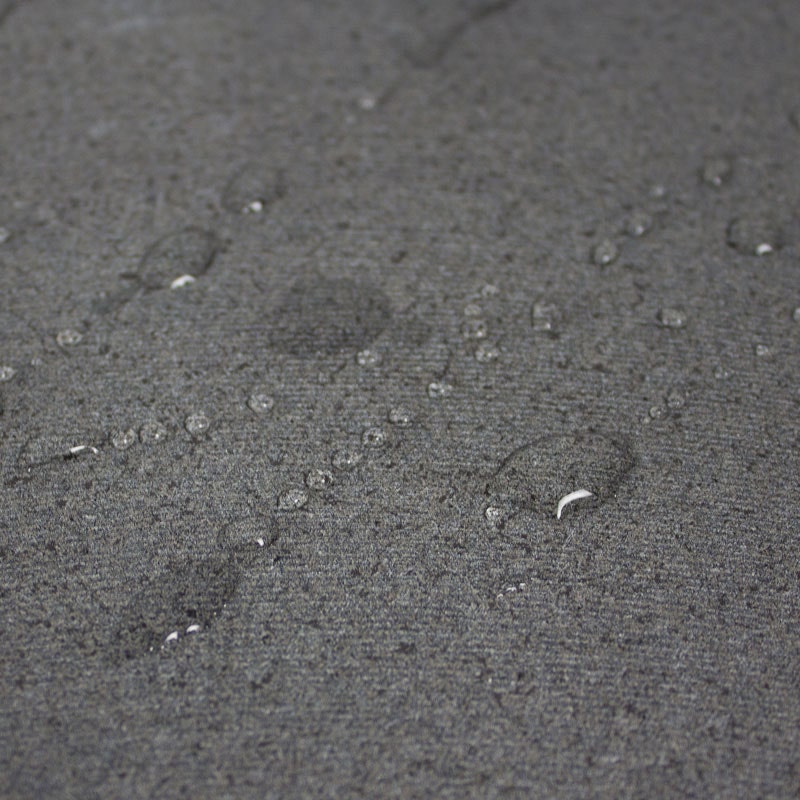
HOW TO SEAL GRANITE
When it’s time to reseal, choose a sealer specifically formulated to penetrate and seal granite such as Stone Care International’s Granite & Stone Sealer.
Before beginning remove all items, such as flower pots, vases and other decorations from the area you wish to seal. Be sure the surface is clean and completely dry before sealing. Typically it takes about 12 hours for granite to dry prior to applying sealer. This is assuming normal, room temperature drying methods. Optimal sealing conditions are at or above room temperature.
- Lightly shake the bottle of sealer. Then apply the sealer with a clean, dry Stone Care International Microfiber Cloth, making sure the surface is thoroughly saturated with the sealer.
- Wipe a heavy application onto the surface, making the surface wet. The sealer may form a foaming or bubbling appearance while applying it. Do not allow the first application to dry prior to the second application. If the surfaces starts to dry, apply more sealer.
- 3-5 minutes after the first application, apply another heavy application. Certain colors will require you to repeat this step for additional applications.
- 30 minutes after the final application, wipe off the excess sealer with a microfiber cloth. If excess dries on the surface and hazing appears, spray additional sealer onto that area and wipe up immediately.
- Keep surface dry for 24 hours after the application process is complete. This is so the seal can completely cure and bond with the pores of the stone.
- After 24 hours perform the water test on all key areas of the surface.
Notes and Tips on Sealing
- Reseal every 6-12 months and as needed in certain areas
- If you get excess sealer on fixtures or unwanted areas, wipe it away immediately if you can. Otherwise, apply more sealer to reactivate the formula, then wipe it away.
- Countertop edges will require at least 2 applications. Make sure to seal under sink lips. Seal edges until there is no water absorption.
- For floors or very large countertops, we recommend using the Stone Care International Granite & Stone Sealer Pour Bottle or a pump sprayer for applying the sealer.
- Certain colors will require additional applications.
- Color enhanced stones such as resinated granite should be sealed with the same procedure.
- Please note the sealer will not have an effect on the finish of the granite and won’t leave behind a shine because it penetrates below the surface and protects from within.


















